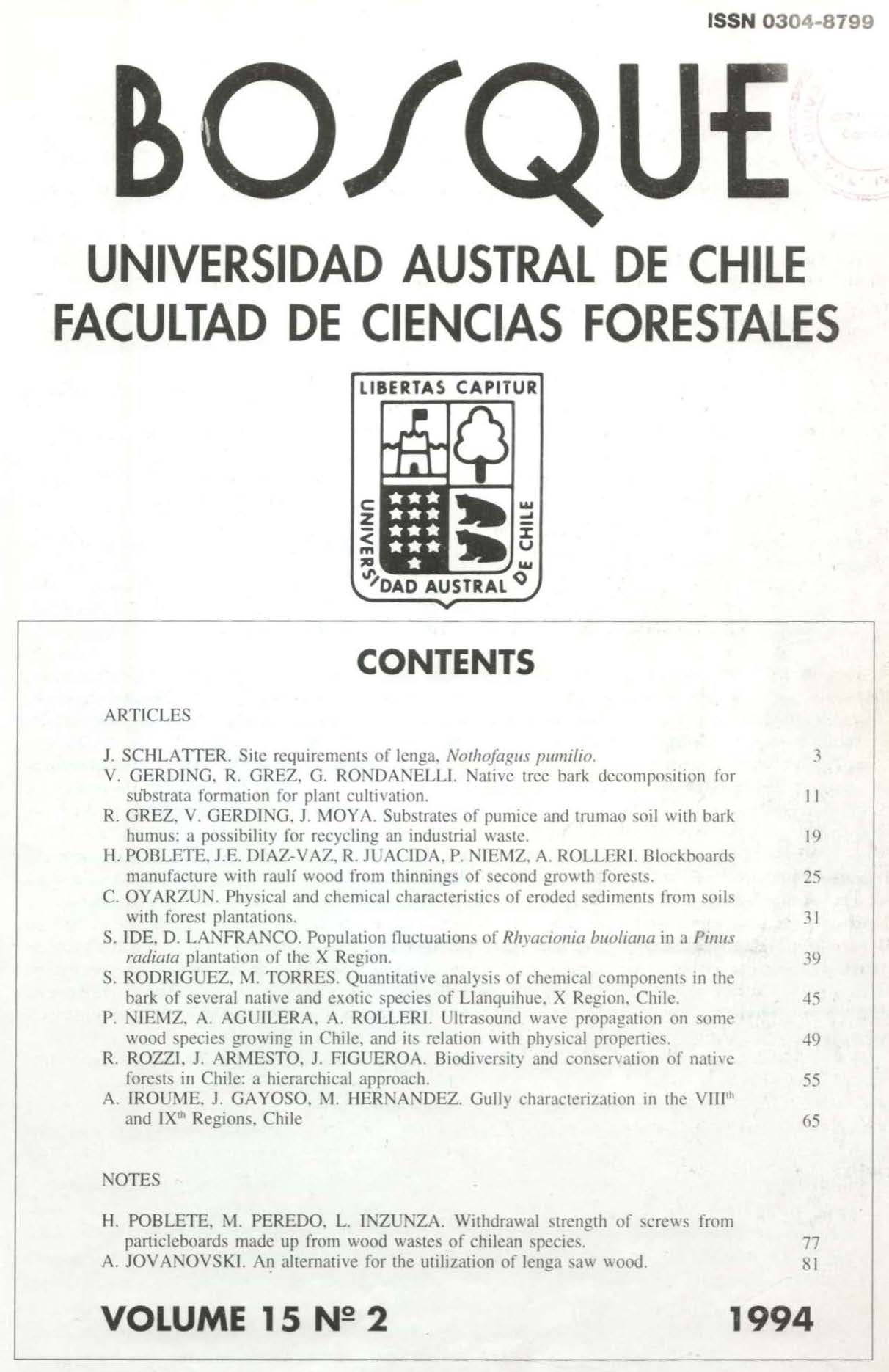Main Article Content
Dec 30, 1994
Abstract
Second growth Raulí (Nothofagus alpina) thinnings and Pinus radiata wood was used as raw material for the manufacturing of blockboards. As adhesive polivinyl acetate was applied. Wood yield on blockboard production and tensile strength of wood and lap joints were studied.
Yield of 58% was determined for the production of blockboards with dryed N. alpina saw wood. This value was higher than those reported for P. radiata by a furniture industry (35-40%).
Tensile strength of N. alpina was about 4 N, almost 40%, higher than P. radiata. There were no differences between Raulí splint and heart wood. Tensile strength of lap joints of N. alpina were superior to those required by EN 204 Standard. After air conditioning a tensile strength of about 12 N with N. alpina and 9 N with P. radiata was determined. Soaking in water for 96 hours at 20°C reduced values to 5.5 N (N. alpina) and 6.0 N (P. radiata).


